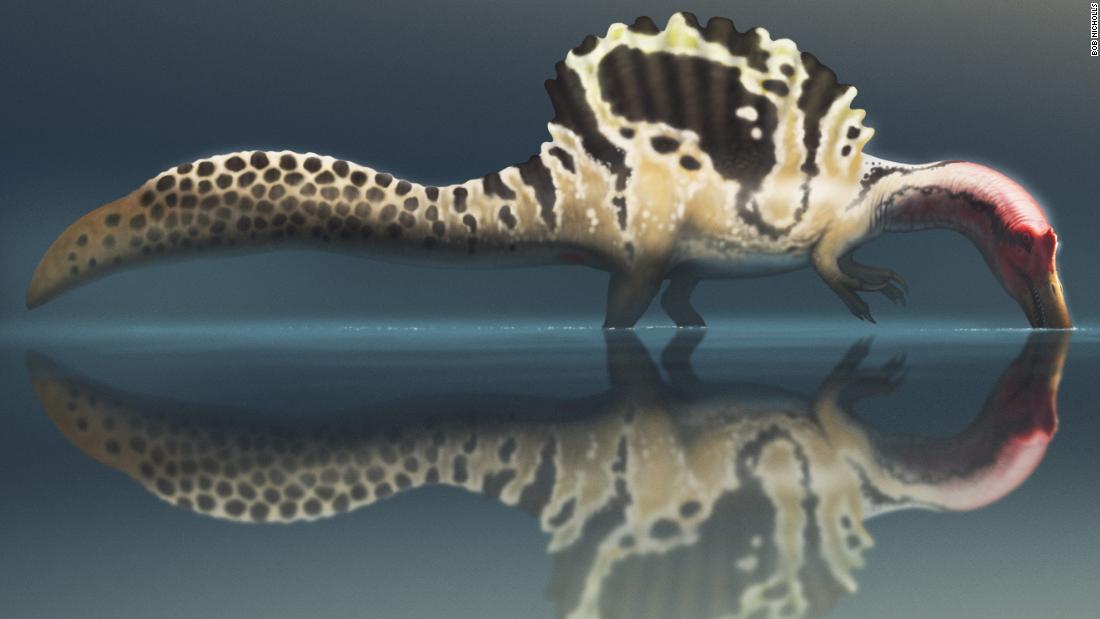Now, they believe it would have been less like an otter and more like a huge flying stork or heron.
Instead of hunting for fish in the water, the huge dinosaur probably would have caught prey out of the water from a position on the coast, researchers at Queen Mary University of London and the University of Maryland found in a study published on Tuesday.
Spinosaurs were a group of large theropods that were larger than tyrannosaurus rex and giganotosaurus, growing to about 15 meters (49.2 feet) in length. These dinos lived during the Cretaceous period – between 145.5 and 65.5 million years ago.
The study compared Spinosaurus fossils with skulls and skeletons of dinosaurs and reptiles that lived in and out of the water, concluding that wading behavior, similar to that of a heron, was the most likely.
This behavior has been debated since Spinosaurus was first discovered in 1915.
“Some recent studies have suggested that he was actively chasing fish in the water, but although they could swim, they wouldn’t be quick or efficient enough to do that effectively,” study author David Hone, senior professor at Queen Mary University of London said in a press release.
“Our findings suggest that the idea of wading has much better support, even if it is a little less exciting.”
‘A bizarre animal’
Spinosaurus proved difficult to understand because it is “a bizarre animal even by dinosaur standards and unlike anything that exists today,” said study co-author Tom Holtz, a paleontologist and principal professor in the University’s geology department. of Maryland in a statement.
“We try to use the evidence we have to better approximate your way of life. And what we discovered did not correspond to the attributes that would be expected in an aquatic predator in the form of an otter, a sea lion or a short-necked plesiosaur. “
The researchers compared Spinosaurus to crocodiles to illustrate its relatively poor adaptation to aquatic life.
Crocodiles are excellent in the water compared to land animals, said Hone, but they cannot actively chase fish.
“If Spinosaurus had less tail muscles, less efficiency and more endurance, it would be difficult to see how these dinosaurs could be chasing fish in a way that crocodiles cannot,” said Hone.
There is still much to learn about spinosaurus, said Hone, who explained that good fossils are missing.
There is still some debate about whether there were different species of Spinosaurus that preferred different environments, or a single species that adapted, Hone told CNN.
The best way to start solving some of these mysteries is to carry out further excavations, said Hone, who added that there is good Spinosaurus material in Egypt, Morocco and possibly Algeria.
